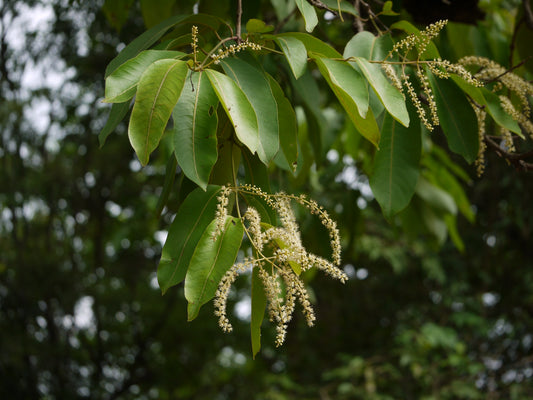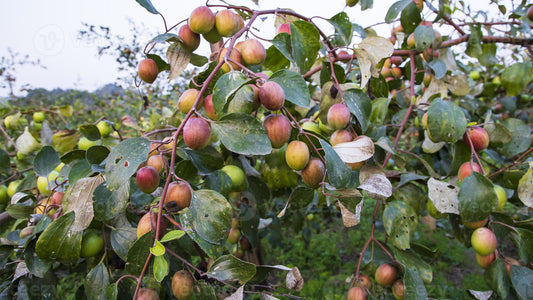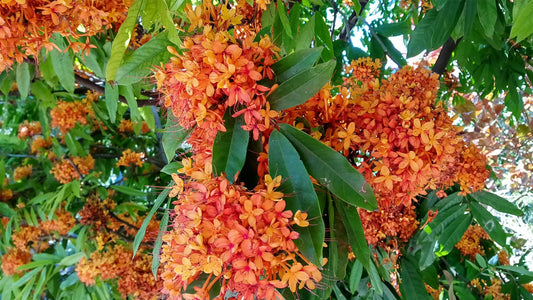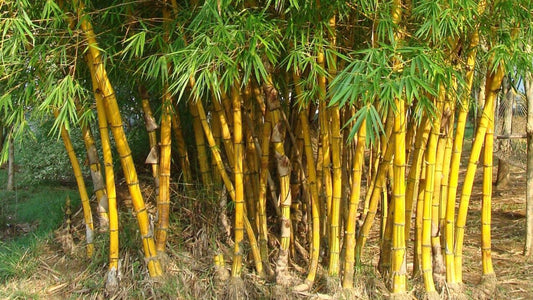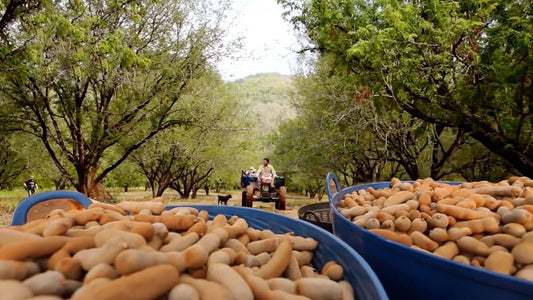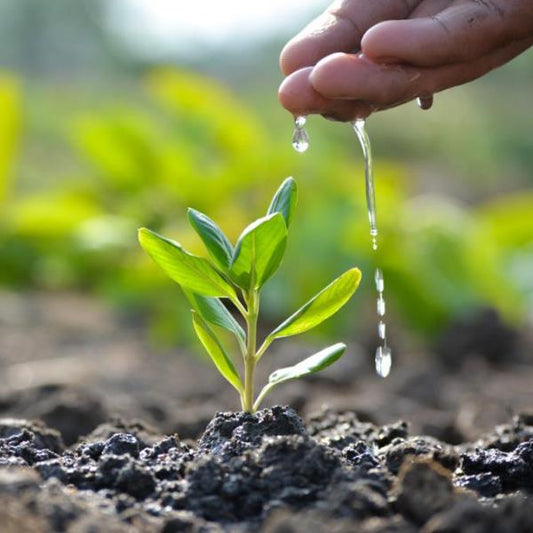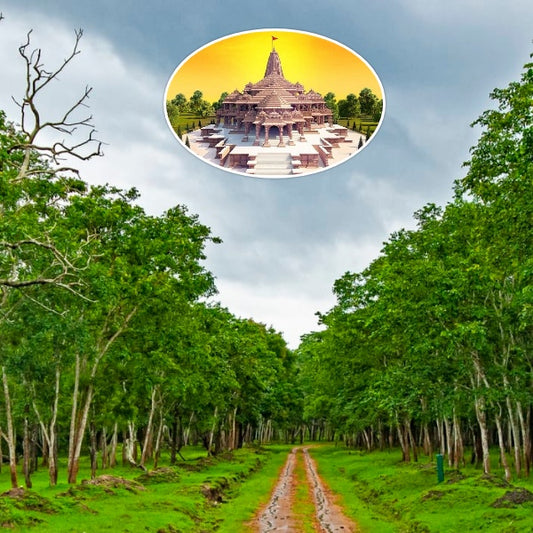Forest for Elephant Corridors - Purulia, West Bengal
Forest for Elephant Corridor - Sustaining Life, Bridging Ecosystems Location: Dangradih, Block - Manbazar - II, Purulia, West Bengal-723131 Geo co Read more
10,548 Trees planted by
*data refreshed every hour
| Vaibhav Mehta | 180 Tree(s) |
| from Bangalore | Feb 14, 2023 |
| Nikita | 129 Tree(s) |
| from Mumbai | Mar 03, 2023 |
| SHIVAKUMAR CHAUKIMATH | 108 Tree(s) |
| from Vijayapura | Feb 17, 2023 |
| Abha Kumar | 108 Tree(s) |
| from Gurugram | Feb 19, 2023 |
| Fanatic Sports | 100 Tree(s) |
| from Mumbai | Mar 01, 2023 |
| Nandu Singh | 100 Tree(s) |
| from Pune | Mar 01, 2023 |
| Rajah Vijay Kumar | 100 Tree(s) |
| from Bangalore | Mar 07, 2023 |
| Vinod Kumar | 100 Tree(s) |
| from Fremont | Feb 13, 2023 |
| ELP HR | 100 Tree(s) |
| from Mumbai | Mar 08, 2023 |
| CONCEPT PUBLIC RELATIONS | 87 Tree(s) |
| from Mumbai | Mar 10, 2023 |
| Sonalika Khattar | 75 Tree(s) |
| from New delhi | Feb 15, 2023 |
| Purva Mathur | 75 Tree(s) |
| from Delhi | Feb 11, 2023 |
| Joyati B | 75 Tree(s) |
| from Hyderabad | Feb 09, 2023 |
| Spandana Gundapaneni | 68 Tree(s) |
| from Bengaluru | Mar 04, 2023 |
| MAnjunath K | 55 Tree(s) |
| from Bengaluru | Feb 08, 2023 |
| Shalini Chawla | 52 Tree(s) |
| from Mumbai | Feb 18, 2023 |
| Anirvan Ghose | 51 Tree(s) |
| from Mumbai | Mar 10, 2023 |
| Pankaj Vatsa | 51 Tree(s) |
| from Gurgaon | Feb 19, 2023 |
| Om Khungar | 51 Tree(s) |
| from Mumbai | Feb 17, 2023 |
| SAMEER DILAWARI | 50 Tree(s) |
| from Amritsar | Feb 14, 2023 |
| Sajeda M Batra | 50 Tree(s) |
| from Mumbai | Feb 14, 2023 |
| Sunil Nanda | 50 Tree(s) |
| from Gurugram | Feb 26, 2023 |
| Shashidhar reddy | 50 Tree(s) |
| from Hyderabad | Feb 13, 2023 |
| Shubha Sharma | 50 Tree(s) |
| from MUMBAI | Feb 14, 2023 |
| Naim Siddiqui | 50 Tree(s) |
| from Gurgaon | Feb 14, 2023 |
*data refreshed every hour
| Duddu Vaishnavi | 10 Tree(s) |
| Secunderabad | Mar 16, 2023 |
| Kamal | 1 Tree(s) |
| RAVULAPALEM | Mar 16, 2023 |
| Sai Teja | 1 Tree(s) |
| SRIKAKULAM | Mar 16, 2023 |
| Thangamani Annadurai | 1 Tree(s) |
| Chennai | Mar 15, 2023 |
| Priyanka Ravella | 1 Tree(s) |
| Kavali | Mar 15, 2023 |
| Stephanie Nongkhlaw | 1 Tree(s) |
| Shillong | Mar 15, 2023 |
| Ashika R | 5 Tree(s) |
| Bengaluru | Mar 15, 2023 |
| Jessy Gj | 1 Tree(s) |
| Srikakulam | Mar 14, 2023 |
| Parnika Chandra | 1 Tree(s) |
| Pune | Mar 14, 2023 |
| Vandana K | 1 Tree(s) |
| Hyderabad | Mar 14, 2023 |
| Vishal Sharma | 1 Tree(s) |
| Chandigarh | Mar 14, 2023 |
| Deepak Kumar | 1 Tree(s) |
| New delhi | Mar 14, 2023 |
| Meeta Wasan | 50 Tree(s) |
| Gurugram | Mar 13, 2023 |
| Parimala Pari | 1 Tree(s) |
| Hyderabad | Mar 13, 2023 |
| Priya Sharma | 5 Tree(s) |
| Bangalore | Mar 13, 2023 |
| Satish Sehrawat | 11 Tree(s) |
| Delhi | Mar 11, 2023 |
| Shabinaa Sultana | 1 Tree(s) |
| Bengaluru | Mar 11, 2023 |
| Shabinaa Sultana | 1 Tree(s) |
| Bengaluru | Mar 11, 2023 |
| Tameem Afroz | 4 Tree(s) |
| Hyderabad | Mar 11, 2023 |
| Narayanan C P | 5 Tree(s) |
| Chennai | Mar 11, 2023 |
| Suma Dalvi | 25 Tree(s) |
| Mumbai | Mar 11, 2023 |
| Harini C N | 1 Tree(s) |
| Chennai | Mar 11, 2023 |
| Rehana Ali | 1 Tree(s) |
| New Delhi | Mar 10, 2023 |
| Saloni garg | 5 Tree(s) |
| Delhi | Mar 10, 2023 |
| CONCEPT PUBLIC RELATIONS | 1 Tree(s) |
| Mumbai | Mar 10, 2023 |
Forest for Elephant Corridors - Purulia, West Bengal
Forest for Elephant Corridor - Sustaining Life, Bridging Ecosystems
Location: Dangradih, Block - Manbazar - II, Purulia, West Bengal-723131
Geo coordinates : https://www.google.com/maps/@22.955417,86.59,13z?hl=en
Project Overview: Forest for Elephant Corridor
Nurturing the delicate balance between humanity and nature, "Forest for Elephant Corridor" emerges as a crucial initiative dedicated to the conservation of elephants. Through purposeful tree plantation, this project addresses the fundamental needs essential for the long-term survival of elephants, including food availability, shelter, habitat connectivity, water conservation, and climate change mitigation.
Key Aims of Forest for Elephant Corridor:
-
Enhancement of Biodiversity: The project focuses on enriching the biodiversity of the region, establishing a balanced ecosystem that supports elephants and diverse flora and fauna.
-
Increase in Green Cover: Contributing to increased green cover, the initiative creates a lush environment beneficial for wildlife and the local community.
-
Reduction of Man-Animal Conflict: By establishing designated corridors and habitats, the project aims to reduce conflicts between humans and elephants, fostering peaceful coexistence.
-
Generation of Rural Employment: The initiative generates employment opportunities for the local community, promoting sustainable practices and economic resilience.
-
Improvement of Wildlife Habitats: Tree plantation contributes to enhancing the overall quality of wildlife habitats, creating a thriving ecosystem.
UN Sustainable Development Goals:
- No Poverty
- Zero Hunger
- Gender Equality
- Climate Action
- Life on Land
Project Implementation Strategies: Forest for Elephant Corridor
- Strategic Tree Planting: Implement a thoughtfully curated selection of native tree species, considering the specific ecological requirements of the region and preferences of local fauna. Focus on creating a diverse and resilient ecosystem that aligns with the needs of elephants.
- Community Engagement and Education: Actively engage with local communities through awareness programs, workshops, and training sessions. Foster a sense of ownership and responsibility among residents, emphasizing the importance of harmonious coexistence with elephants.
- Monitoring and Evaluation: Establish robust monitoring and evaluation processes to assess the ecological impact of the project. Collect data on biodiversity, water table levels, and community well-being to track progress. Use this information to guide adaptive management strategies for ongoing success.
- Corridor Creation and Habitat Connectivity: Designate and create specific corridors that connect fragmented elephant habitats. Ensure the strategic planting of trees along these corridors to facilitate the movement of elephant populations, promoting migration and contributing to habitat connectivity.
- Water Conservation Initiatives: Implement water conservation initiatives through tree plantation. Trees play a crucial role in reducing soil erosion, increasing groundwater recharge, and maintaining stream flow. These efforts contribute to securing critical water resources for elephants and other wildlife.
- Climate Change Resilience: Emphasize the role of trees in climate change mitigation. Trees absorb carbon dioxide and release oxygen, helping to mitigate the impacts of climate change. This aspect contributes to maintaining the ecological balance of elephant habitats and supports their long-term survival.
- Capacity Building and Skill Development: Invest in capacity building programs for local communities, focusing on skills related to tree care, agroforestry, and sustainable land management. Empower individuals to actively participate in the success of the Forest for Elephant Corridor.
Choosing tree species for planting in Purulia, West Bengal requires consideration of the local climate, soil conditions, and ecological preferences. Here are the tree species that are well-suited for Purulia, West Bengal:
-
Neem (Azadirachta indica): Well-adapted to arid conditions, Neem is known for its medicinal properties and ability to thrive in diverse soil types.
-
Mango (Mangifera indica): A popular fruit tree, Mango adapts well to the tropical climate of West Bengal and contributes to agroforestry practices.
-
Bamboo (Bambusa spp.): Fast-growing and versatile, Bamboo is valuable for erosion control, construction, and as a renewable resource.
-
Mahogany (Swietenia mahagoni): With a straight trunk and valuable timber, Mahogany is suitable for reforestation and contributes to the timber industry.
-
Teak (Tectona grandis): Known for its high-quality timber, Teak is a valuable hardwood tree that thrives in well-drained soils.
-
Jamun (Syzygium cumini): Well-adapted to tropical climates, Jamun is a fruit tree with ecological benefits and medicinal properties.
-
Sissoo (Dalbergia sissoo): Sissoo is a fast-growing tree that provides shade and is valuable for soil conservation, particularly in arid regions.
-
Acacia (Acacia spp.): Drought-tolerant and adaptable, various Acacia species are suitable for afforestation and agroforestry.
-
Tamarind (Tamarindus indica): Tamarind is well-suited for dry regions, providing both shade and a valuable fruit crop.
-
Kadam (Neolamarckia cadamba):Common in West Bengal, Kadam is a fast-growing tree with ecological significance and cultural importance.
Outcome: "Forest for Elephant Corridor" aligns with these Sustainable Development Goals, emphasizing its commitment to creating a sustainable and harmonious environment for elephants and the broader ecosystem. Join us in this essential endeavor to ensure the well-being and conservation of our elephant populations.
Elephant Migration Patterns
Understanding the intricate patterns of elephant migration is essential for planning effective corridors. Tracking seasonal movements and identifying critical habitats contribute to the success of the conservation project.
Agroforestry Impact on Local Economy
The implementation of agroforestry models not only benefits elephants but also has a positive impact on the local economy. Diversifying income sources for farmers through tree plantation enhances economic resilience and promotes sustainable land use practices.
Community Awareness and Education
Raising awareness and educating local communities about the importance of harmonious coexistence with elephants is a key aspect of the project. Community engagement programs, workshops, and training sessions foster a sense of responsibility and ownership.
Corridor Design and Landscape Planning
Designing corridors strategically and planning the landscape play a crucial role in the success of the Elephant Corridor project. It involves selecting appropriate tree species, considering ecological requirements, and ensuring connectivity between fragmented habitats.
Wildlife Habitat Conservation
Beyond elephants, the project aims to conserve the overall wildlife habitat. Promoting biodiversity and creating a thriving ecosystem benefit various plant and animal species, contributing to the ecological balance of the region.
Water Conservation Initiatives
The project's focus on water conservation initiatives through tree plantation is significant. Trees help reduce soil erosion, increase groundwater recharge, and maintain stream flow, ensuring critical water resources for elephants and supporting overall watershed health.
FAQ
Why is an Elephant Corridor important?
An Elephant Corridor is crucial for the free movement of elephant populations between fragmented habitats. It helps prevent isolation, ensuring genetic diversity and overall ecosystem health.
How does tree plantation benefit elephants in the corridor?
Tree plantation provides essential elements of an elephant's habitat, such as food, shelter, and connectivity. It creates corridors for migration, allowing elephants to roam freely.
How does the project address man-animal conflict?
By establishing designated corridors and habitats, the project aims to reduce conflicts between humans and elephants. Creating a harmonious coexistence is a key objective.
What tree species are planted in the Elephant Corridor?
The choice of tree species depends on the specific ecological zone. Native species are selected to ensure they align with the existing ecosystem and fulfill the needs of elephants.
How does tree plantation contribute to water conservation?
Trees play a vital role in water conservation by reducing soil erosion, increasing groundwater recharge, and maintaining stream flow. This provides critical water resources for elephants and other wildlife.
What are the climate change mitigation benefits of the project?
Trees absorb carbon dioxide and release oxygen, helping mitigate the impacts of climate change. This supports the ecological balance of elephant habitats and ensures their long-term survival.
How does the project benefit local communities?
The project generates employment opportunities for the local community, promoting sustainable practices and economic resilience. Additionally, it fosters awareness about the importance of elephant conservation.
How can individuals contribute to the Elephant Corridor project?
Individuals can contribute by supporting tree plantation initiatives, participating in awareness programs, and promoting the importance of elephant conservation in their communities.
How does the project align with UN Sustainable Development Goals?
The project aligns with goals such as No Poverty, Zero Hunger, Gender Equality, Climate Action, and Life on Land, emphasizing its commitment to creating a sustainable and harmonious environment.
What is the long-term vision for the Elephant Corridor project?
The long-term vision is to create a sustainable and community-driven model for elephant conservation. The project aims to showcase the positive outcomes of harmonizing environmental conservation, economic development, and community resilience.


